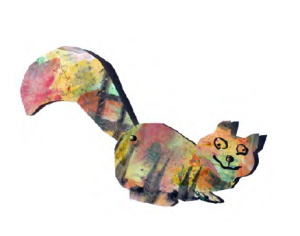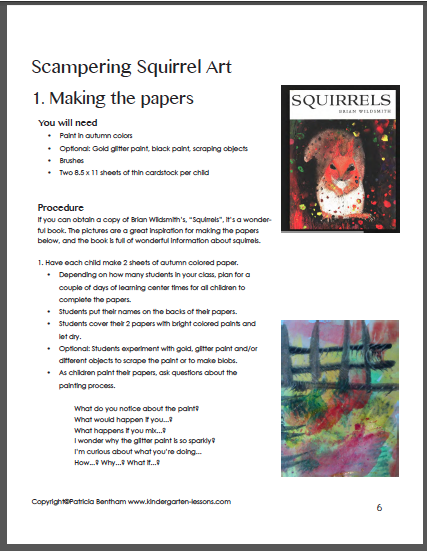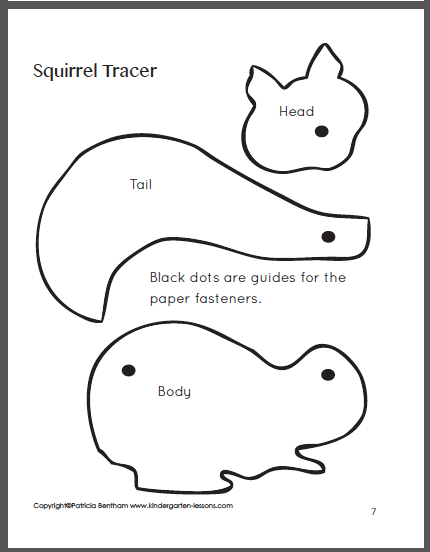One crisp autumn morning, the father of one of my students brought in a box containing branches and leaves.
Curled up in the center were three baby squirrels. The dad told us that the mother squirrel had been killed by a car and that he was taking the babies to a wildlife rehabilitation center.
The babies, born pink and naked, had some fur on them so he thought they were about a month old. The students stared at the tiny squirrels and asked a zillion questions, “Can we touch them? Why not? What do they eat? Are you going to feed them? Can we give them milk? Why not? Can we keep them?”
The squirrels soon left for their new home but their visit had started two weeks of curiosity into the topic of squirrels.

To make squirrels like this one, check out the free squirrel pages below.
Investigating Squirrels
Fortunately, the school I worked at was located next to trees, so squirrels were easily available for the children to observe. We took a number of trips outside specifically to investigate them.
This led to learning not only about what squirrels need to survive, but also about autumn weather changes, hibernation, enemies of squirrels and how litter in the schoolyard can be harmful to wildlife.
The children and their older buddies mapped out areas of the ground around favorite squirrel trees and found evidence of what they thought the squirrels were eating. Then they displayed a collection of their findings and some students printed labels.
Other children contributed to a group mural about their squirrel observations. They asked loads of questions and enjoyed looking at and listening to books about squirrels.
Free handout
I’ve created a mini 10 page research unit which evolved from that learning adventure. If you’d like to download it, get it for FREE here…


Books and toys to accompany free handout…
Squirrels: Animals That Make a Difference! (Engaging Readers, Level 1)
Busy Little Squirrel by Nancy Tafuri
Squirrels Leap, Squirrels Sleep, by April Pulley Sayre (Author), Steve Jenkins (Illustrator)
The Squirrels’ Busy Year by Martin Jenkins